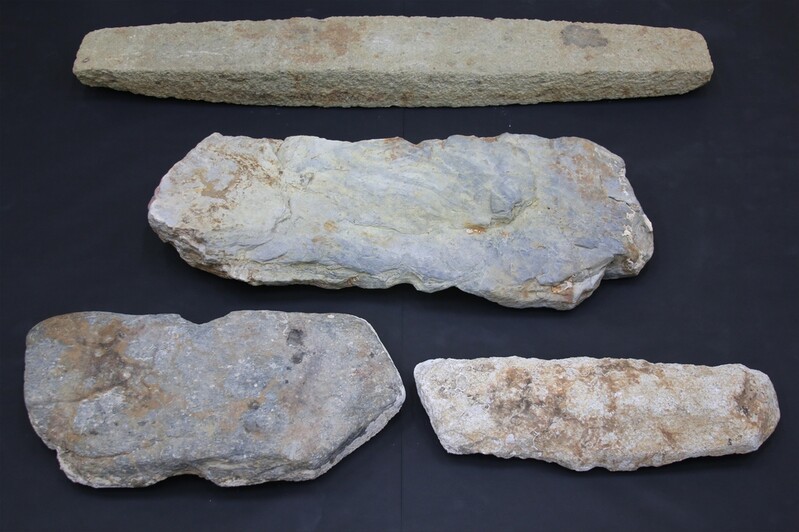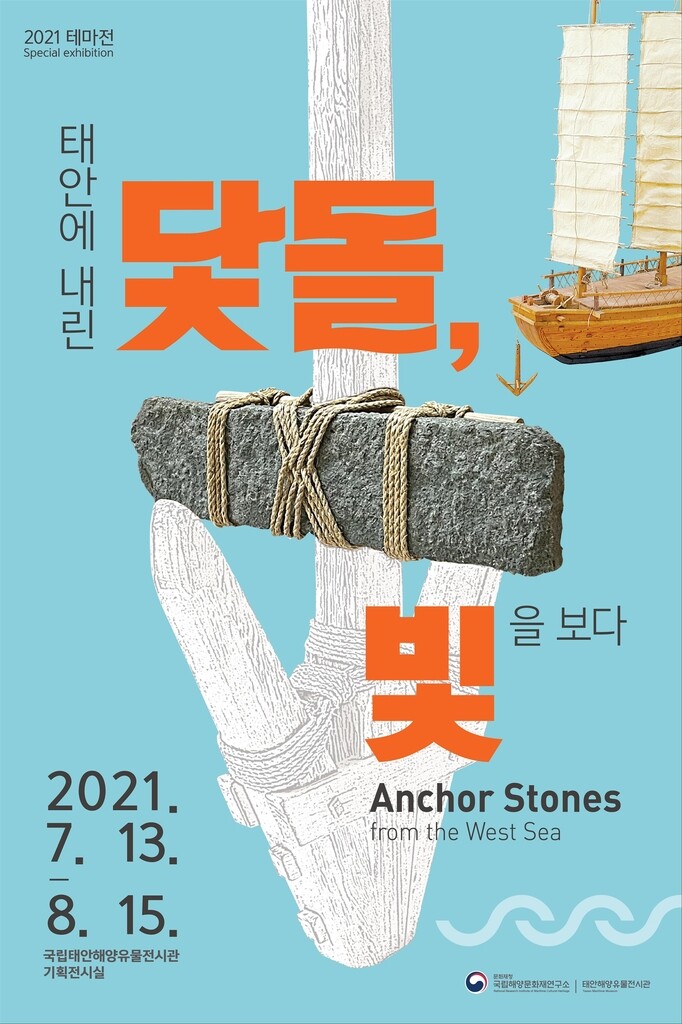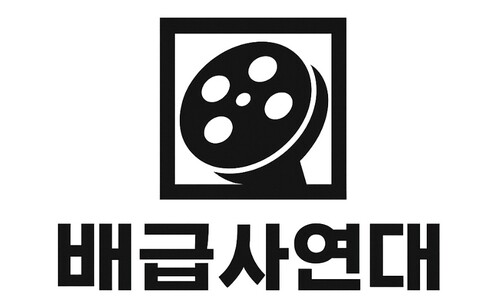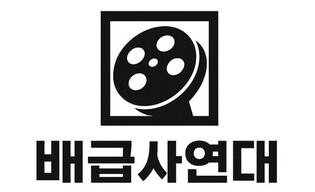 |
| ▲ This photo provided by the National Maritime Museum shows the anchor stones found underwater. (PHOTO NOT FOR SALE) (Yonhap) |
 |
| ▲ This photo provided by the National Maritime Museum shows the poster for the "Anchor Stones from the West Sea" exhibition held at the Taean Maritime Museum from July 13. (PHOTO NOT FOR SALE) (Yonhap) |
SEOUL, July 12 (Yonhap) -- The sea off of Taean County, South Chungcheong Province, is called the "Underwater Gyeongju" as many underwater cultural assets are being discovered.
At the bottom of the sea, pieces of pottery have been salvaged along with old sunken ships sucha s "Tae-An ship: and "Mado No.1-4." the shipwrecks including "Taean Shipwreck" and "Mado Shipwrecks No. 1 to 4," have been salvaged. Among the relics, about 140 anchor stones were found underwater as well. .
A small-scaled and anchor-themed exhibition will be held at the Taean Maritime Museum from July 13 to August 15, according to the National Research Institute of Maritime Cultural Heritage of Korea on Monday.
The exhibition "Anchor Stones from the West Sea" will showcase seven pieces of materials, including three Korean anchor stones, one Chinese anchor, a model that shows the combination of wooden anchor and anchor stones, and a traditional ship model that explains where the anchor was installed.
Korean anchor stones from the West Sea are made into rectangles by manufacturing natural stones and grooves in order to tie ropes.
Small anchor stones are 40 to 50 cm in length and weigh 5 to 30 kilograms. Large anchor stones are more than 2 meters long and weigh 300 to 700 kilograms. The types of rocks used to make these anchor stones vary from tuff, granite, and gneiss.
Anchor stones that have been on the seabed for a long time can be displayed only after coming up to the ground and marking the damaged areas, removing salt, natural drying, and going through strengthening treatment.
"We also found a well-structured Chinese anchor stone in the Taean waters," an official from the Taean Maritime Museum said. "We hope it will be a place where people can understand the structure and function of the anchor, which is an important accessory to a ship, as well as the characteristics of the Korean anchor."
The institute plans to publish a report containing three-dimensional data, drawings and photos of anchor stones owned by the exhibition hall by next year.
(END)
(C) Yonhap News Agency. All Rights Reserved




































